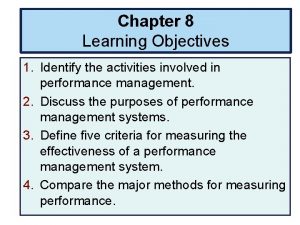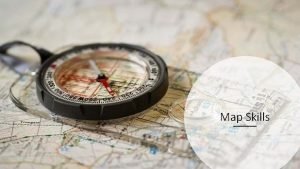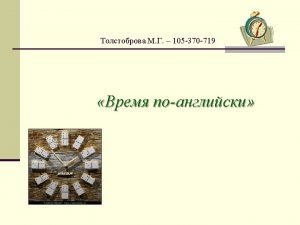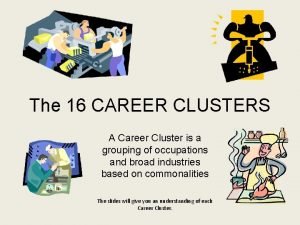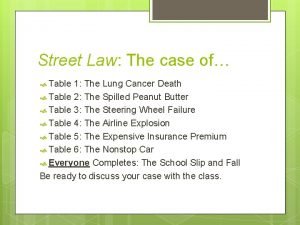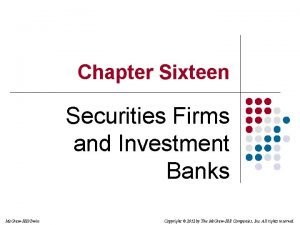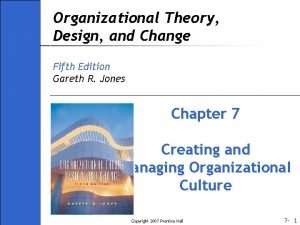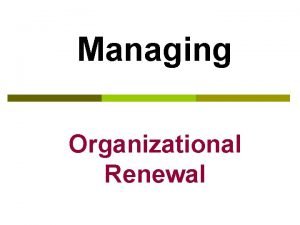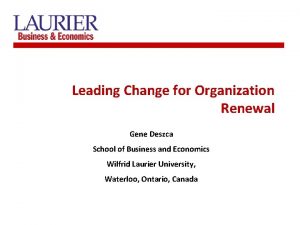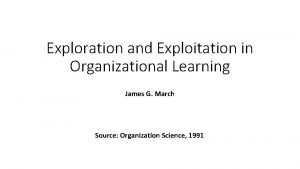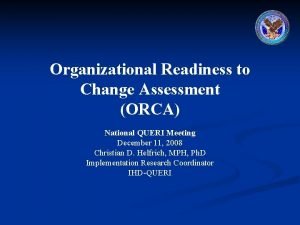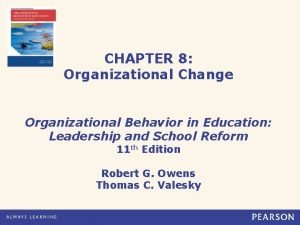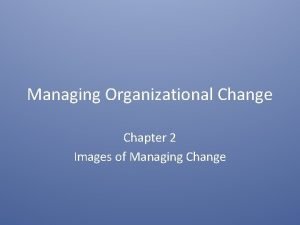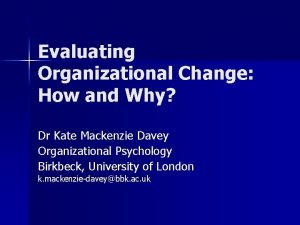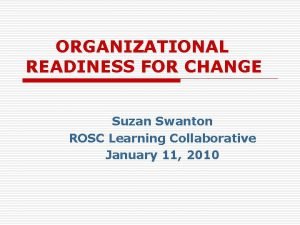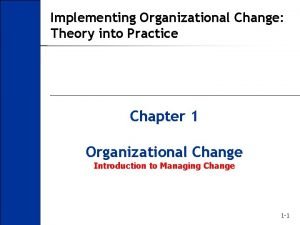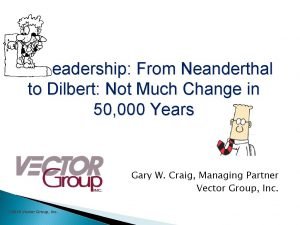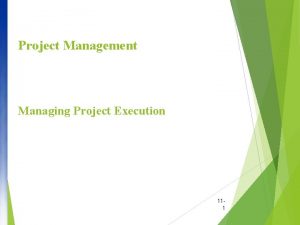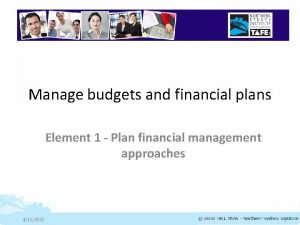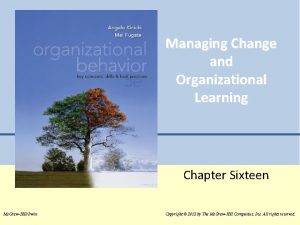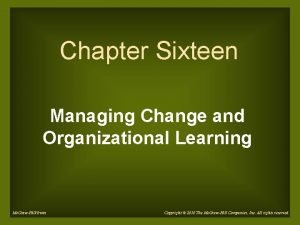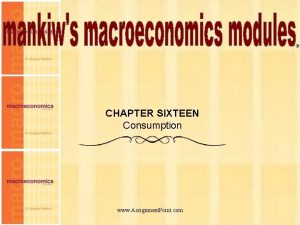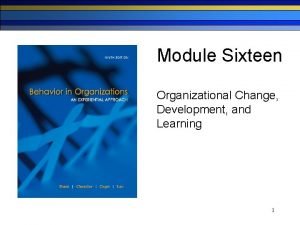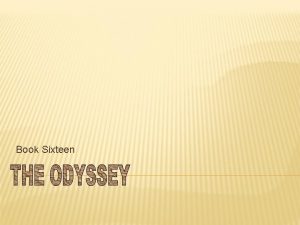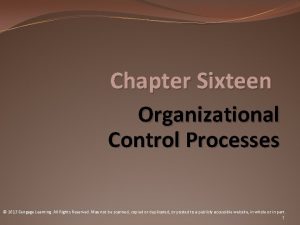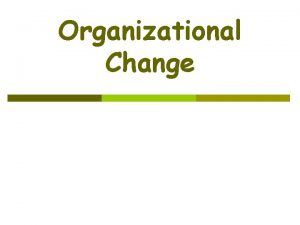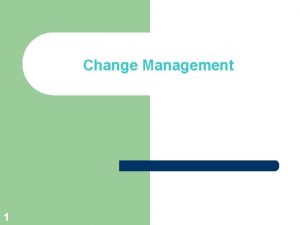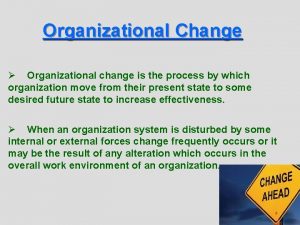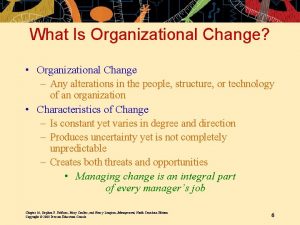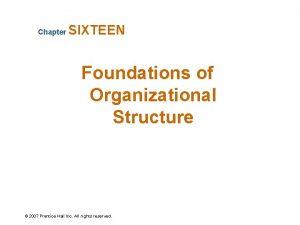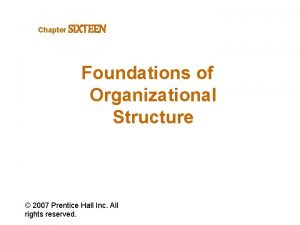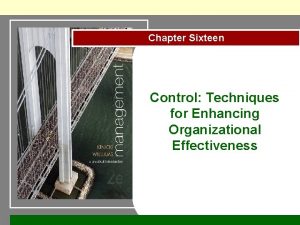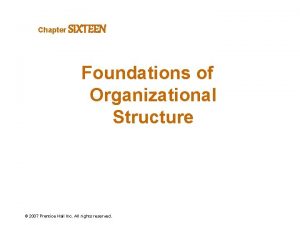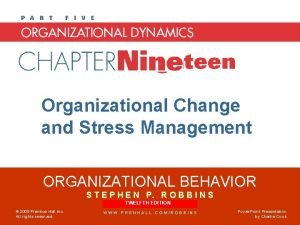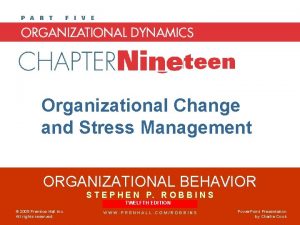Chapter Sixteen Manage Change and Organizational Learning Mc
































- Slides: 32


Chapter Sixteen Manage Change and Organizational Learning Mc. Graw-Hill/Irwin Organizational Behavior: Key Concepts, Skills & Best Practices, 3/e Copyright © 2008 The Mc. Graw-Hill Companies, Inc. All rights reserved.

After reading the material in this chapter, you should be able to: • Discuss the external and internal forces that can create the need for organizational change. • Describe Lewin’s change model and the systems model of change. • Explain Kotter’s eight steps for leading organizational change. 3

After reading the material in this chapter, you should be able to: • Review the 11 reasons employees resist change. • Identify alternative strategies for overcoming resistance to change. • Discuss the process organizations use to build their learning capabilities. 4

External Forces • External forces for change - originate outside the organization. - Demographic characteristics - Technological advancements - Customer and market changes - Social and political pressures 5

Internal Forces • Internal forces for change - originate inside the organization. 6

Lewin’s Change Model • Unfreezing - Focus is to create the motivation to change - Begin by disconfirming the usefulness or appropriateness of employees’ present behaviors or attitudes 7

Question? What is the process by which a company compares its performance with that of high -performing companies? A. Corporate assessment B. Productivity evaluation C. Benchmarking D. Contingency divergence 8

Lewin’s Change Model • Benchmarking – process by which a company compares its performance with that of high-performing companies 9

Lewin’s Change Model • Changing - Organizational change can be aimed at improvement or growth, or it can focus on solving a problem such as poor customer service or low productivity - Can be targeted at different levels in an organization 10

Lewin’s Change Model • Refreezing - Change is stabilized by helping employees integrate the changed behavior or attitude into their normal way of doing things - Giving employees the chance to exhibit new behaviors, which are then reinforced 11

Change Management • Read an article on “An Improvisational Model of Change Management” 12

A Systems Model of Change Systems Approach • Based on the premise that any change, no matter how large or small, has a cascading effect throughout an organization 13

A Systems Model of Change • Mission statement – summarizes why an organization exists • Strategic plan – long-term plan outlining actions needed to achieve desired results 14

A Systems Model of Change • Target elements of change – components of an organization that may be changed - Organizational arrangements - Social factors - Methods - People 15

Applying the Systems Model of Change • Aid during the strategic planning process • Using the model as a diagnostic framework to determine the causes of an organizational problem and to propose solutions 16

Steps to Leading Organizational Change Table 16 -1 17

Organization Development • Organization Development - a set of techniques or tools that are used to implement organizational change. 18

Some OD Interventions for Implementing Change Table 16 -2 19

OD Research and Practical Implications 1. Planned organizational change works 2. Change programs are more successful when they are geared toward meeting both short-term and long-term results 3. Organizational change is more likely to succeed when top management is truly committed to the change program 4. Effectiveness of OD interventions is affected by cross-cultural considerations 20

Why People Resist Change in the Workplace 1. An individual’s predisposition toward change 2. Surprise and fear of the unknown 3. Climate of mistrust 4. Fear of failure 5. Loss of status and/or job security 6. Peer pressure 21

Why People Resist Change in the Workplace 7. Disruption of cultural traditions and/or group relationships 8. Personality conflicts 9. Lack of tact and/or poor timing 10. Nonreinforcing reward systems 11. Past success 22

Six Strategies for Overcoming Resistance to Change Table 16 -3 23

Learning Organization • Learning organization – proactively creates, acquires, and transfers knowledge throughout the organization 24

Building an Organization’s Learning Capability Figure 16 -2 25

Question? What are the set of core competencies and internal processes that enable an organization to adapt to its environment? A. Learning capabilities B. Knowledge contingencies C. Learning contingencies D. Learning culture 26

Building an Organization’s Learning Capability • Learning capabilities – set of core competencies and internal processes that enable an organization to adapt to its environment 27

Building an Organization’s Learning Capability • Facilitating factors – represent the internal structure and processes that affect how easy or hard it is for learning to occur and the amount of effective learning that takes place 28

Factors that Facilitate Organizational Learning Table 16 -4 29

Learning Modes • Learning modes – various ways in which organizations attempt to create and maximize their learning - Analytical learning Synthetic learning Experimental learning Interactive learning Structural learning Institutional learning 30

Key Functions in Building a Learning Organization 1. Building a commitment to learning 2. Working to generate ideas with impact 3. Working to generalize ideas with impact 31

Video: Johnson & Johnson See how the Johnson & Johnson Credo impacts the employees. (12: 00) 32
 Chapter 8 learning to manage
Chapter 8 learning to manage 16point compass
16point compass Whats half past 12
Whats half past 12 16 career clusters images
16 career clusters images Sixteen year old carrie is babysitting
Sixteen year old carrie is babysitting Sixteen securities inc
Sixteen securities inc Organizational change and stress management
Organizational change and stress management Cuadro comparativo de e-learning
Cuadro comparativo de e-learning Organizational theory design and change
Organizational theory design and change Leading change and organizational renewal
Leading change and organizational renewal Leading change and organizational renewal
Leading change and organizational renewal Organizational theory design and change
Organizational theory design and change Exploration and exploitation in organizational learning
Exploration and exploitation in organizational learning Organizational change adalah
Organizational change adalah Teori organizational development
Teori organizational development Organizational readiness to change assessment
Organizational readiness to change assessment Organizational change in schools
Organizational change in schools Organizational change images
Organizational change images Bert spector
Bert spector Evaluating organizational transformation
Evaluating organizational transformation Organizational readiness for change maryland
Organizational readiness for change maryland Implementing organizational change theory into practice
Implementing organizational change theory into practice Dilbert organizational change
Dilbert organizational change What is a physical change
What is a physical change Absolute change and relative change formula
Absolute change and relative change formula Whats the difference between chemical and physical change
Whats the difference between chemical and physical change Supply and demand curve shifts
Supply and demand curve shifts What is example of physical change
What is example of physical change Rocks change due to temperature and pressure change
Rocks change due to temperature and pressure change Whats the difference between physical and chemical changes
Whats the difference between physical and chemical changes First order change examples
First order change examples 111 project
111 project Manage budgets and financial plans
Manage budgets and financial plans
